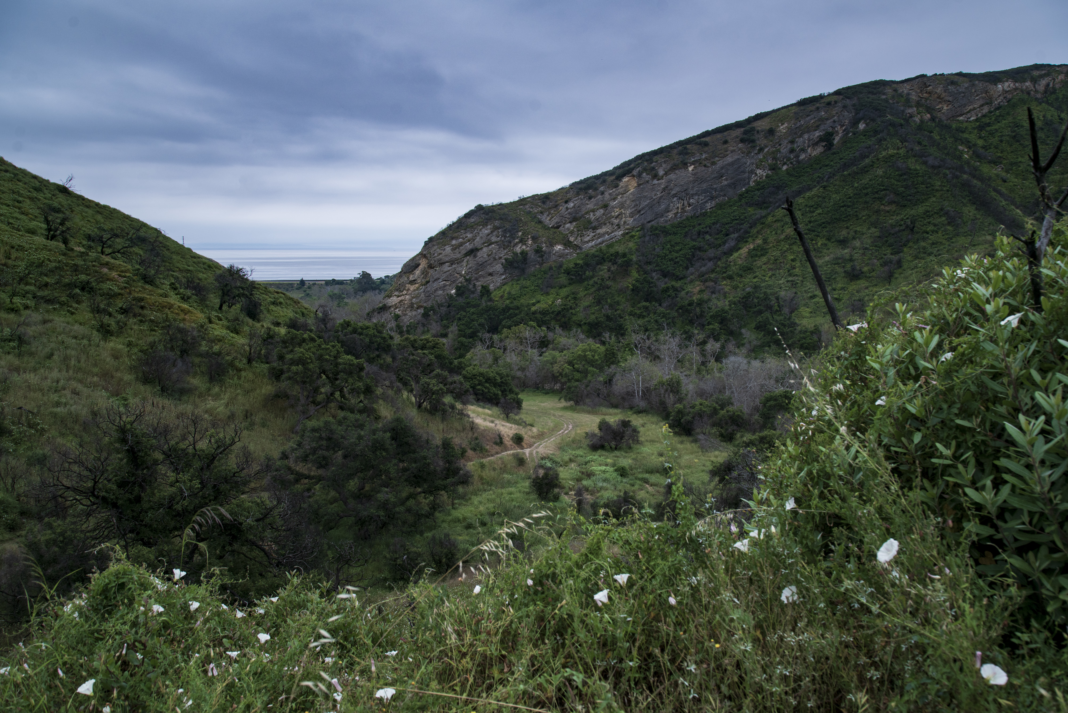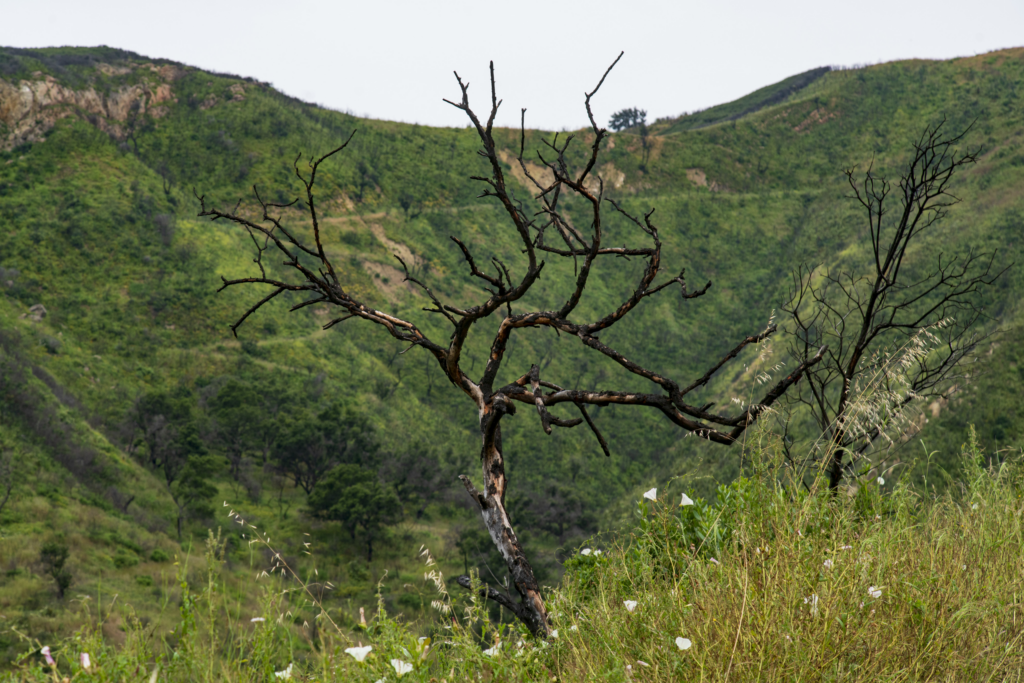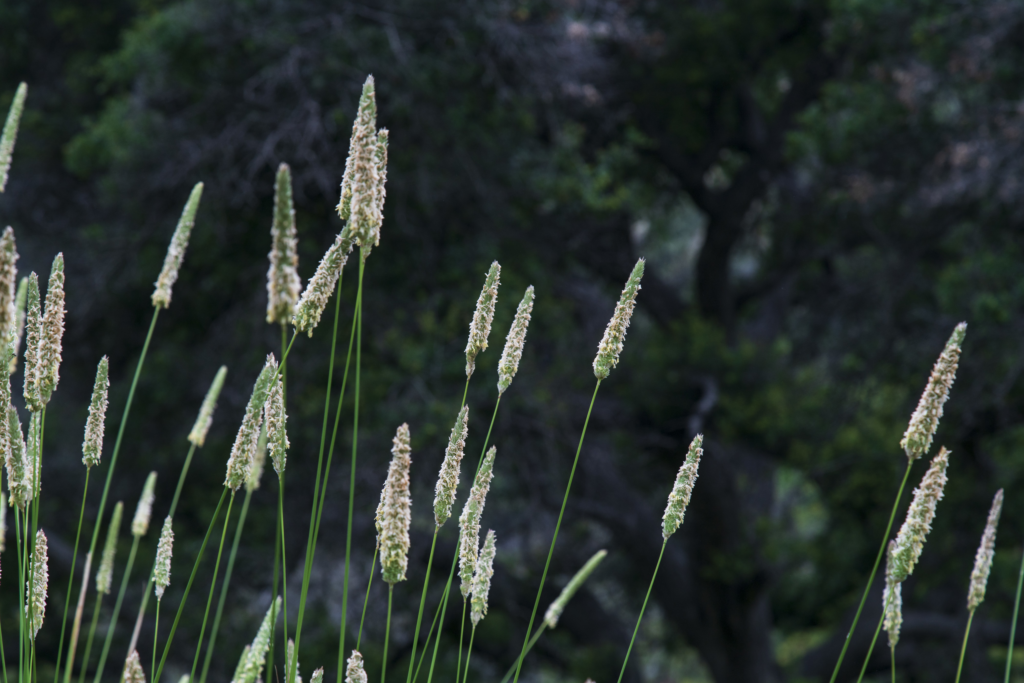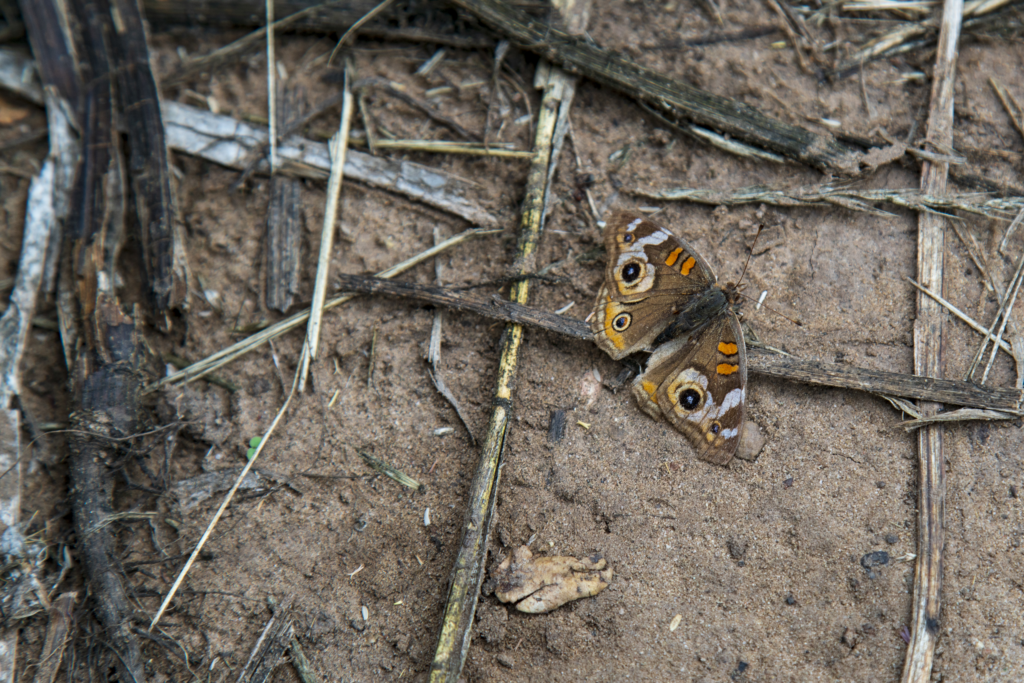The canyon has been a hideout for bandits and a private picnic spot for the well-heeled. Now it’s a window into California’s nature and past.
Driving west from Santa Barbara, the gorgeous Gaviota Coast captivates. On the left, the dazzling ocean with its ever-changing blues and grays. On the right, the spare, beautiful foothills of the Santa Ynez Mountains: green, yellow, or brown, depending on the season. It seems this landscape — unspoiled by housing, gas stations, and shopping centers — is California as it has always been. But visiting the Arroyo Hondo Preserve, you learn that the landscape was greatly altered by agriculture, beginning with the cattle introduced by the Spaniards in the 1700s.
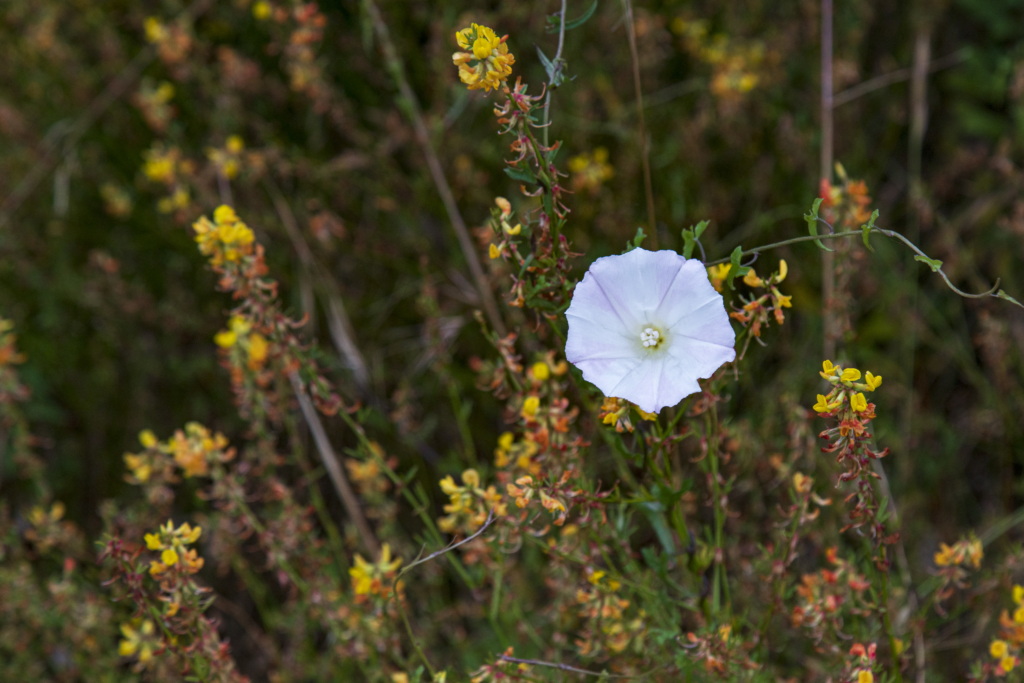
At Arroyo Hondo, however, it’s still possible to get a glimpse of what California looked like when only the Chumash lived here 5,000 years ago. A canyon carved from mountains to beach by the deep creek that gives it its name, Arroyo Hondo descends from towering sandstone cliffs, down through oak canopies and meadows, and passes under the freeway and rail trestle to the ocean.
With 782 acres owned and managed by The Land Trust for Santa Barbara County, Arroyo Hondo boasts one of the most unique botanic regions in the U.S, rich in biodiversity and habitat for numerous plant and animal species, including endangered ones.
History in Arroyo Hondo
After Spanish colonization, José Francisco Ortega, the first comandante of the Santa Barbara Presidio, was given the rights to Arroyo Hondo as part of a 26,530-acre Mexican land grant in 1834. The family kept the rancho through the transfer to the United States in 1848. It served as a haven for smugglers and outlaws, a mill, and a stagecoach stop.
The canyon was purchased in 1908 by Jennie Hollister Chamberlain Hale to use for picnic outings from Santa Barbara. For these, she required a caravan of three touring cars — one for the food, linens, silver, and servants; one for friends and family; and a third for the dogs.
Standing in one of the meadows alongside the lively creek in this rare and magical spot, looking up at the sandstone ridges, awed by the grand sycamore and bay trees, it’s easy to see how this paradise is the perfect picnic spot.
The Hollister and Chamberlain families owned the property until 2001, when, spearheaded by J.J. Hollister, they sold it to the Land Trust for Santa Barbara County to be “protected in perpetuity.” But protection is only part of the story: Arroyo Hondo’s remarkable beauty and value are the result of years of dedicated restoration, diligent management, and generous philanthropy.
John Warner and his wife, Jennifer Dunn, have been co-managers at Arroyo Hondo for almost twenty years. A botanist, John’s nursery, Santa Barbara Natives, propagates all the native plants grown between Carpinteria and Point Conception, and he has been vital to the revegetation project that began in 2002. A destructive fire in October 2021 means that restoration and maintenance work is ongoing.
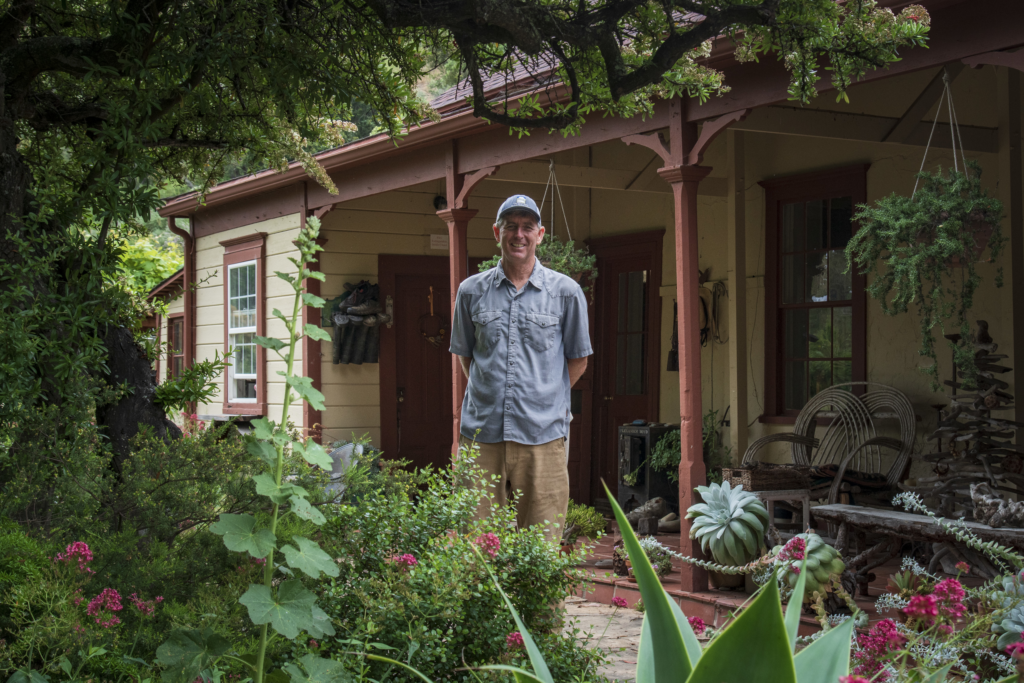
“I love working here and being in nature,” John says, adding, “I’d say ninety-eight percent of people come out here to commune with nature. And the other two percent come out because they’re interested in the history.”
He and Jennifer live in the Ortega Adobe, built in 1854, which is practically a museum, filled with art, photos, and historic documents. Crossing the threshold feels like stepping back into early California.
Learning in Arroyo Hondo
Tall and laconic, resembling an archetypal Western hero — despite wearing a baseball cap and driving a Gator utility vehicle — John possesses deep knowledge about the preserve.
“The canyon has taught me a lot over the years,” he says, “and given me so much. And everybody’s always happy when they come here.” He commends the many wonderful volunteers who help the Land Trust with projects, support it with donations, and bring their kids out. “And all the school groups,” he adds. “I think the school program is one of the best things that Arroyo Hondo has to offer to the community.”
Many of the school kids who visit Arroyo Honda come with the Wilderness Youth Project (WYP), a nonprofit educational program that believes: “Being in nature makes kids smarter, healthier, and happier.”
Andrew Lindsey of the Wilderness Youth Project points out that “because the canyon has stayed forested, it does a remarkable job of preserving water in the creek. And with water comes life.” Indeed, Arroyo Hondo Creek is known as one of the most pristine and healthiest watersheds in Southern California, making it an invaluable resource for students, scientists, nature lovers, and the wildlife who call it home.
Andrew Lindsey, director of school-based programs for WYP, regularly brings groups of students. He says, “Arroyo Hondo is a place where people get to have that feeling of really being held in a special place outdoors.”
He likes to take the kids up a steep walk to the base of a cliff and show them a rock that has a spigot from which water pours out into a tiny basin full of maidenhair ferns. “You could tell a kid over and over what a spring is, and they’ll go, yeah, yeah. And then you show them this, and they’re like, “Oh, I get it! This is a place where fresh water comes out of the earth.”
Andrew points out that “because the canyon has stayed forested, it does a remarkable job of preserving water in the creek. And with water comes life.” Indeed, Arroyo Hondo Creek is known as one of the most pristine and healthiest watersheds in Southern California, making it an invaluable resource for students, scientists, nature lovers, and the wildlife who call it home.
WYP also brings kids and their families for weekend Family Camps, and for many, this might be their first time camping. “It’s really a credit to Arroyo Hondo to let us do that, because there’s not that many places where we could have it be as ideal as it is,” Andrew says.
Restoring Arroyo Hondo
John takes the Gator high, high up to a stunning view of the Gaviota Coast and the Santa Barbara Channel Islands Marine Sanctuary below. On the way, he points out his experimental planting beds. “We have study plots of various native plants in four different soil types,” he explains, “so we can hopefully learn something and share it with our community on what best to do after a fire.”
Back down near the coast, the creek swells and pools before going through a concrete culvert under the 101 and into the ocean. “There’s a lot of research that happens here in this creek,” John says, pointing out that it’s also the site of the very first fish ladder built for steelhead trout rehabilitation on the South Coast.
According to Andrew, the area near the tunnel is a favorite with the kids. “It might be because the place is so relaxing and kind of majestic at the same time. I feel this is one of the best places where you can explain to a kid about preservation and about diversity. You can see that it’s preserved, and you can see how magnificent everything is. And yet it’s not so magnificent that it appears exotic.”
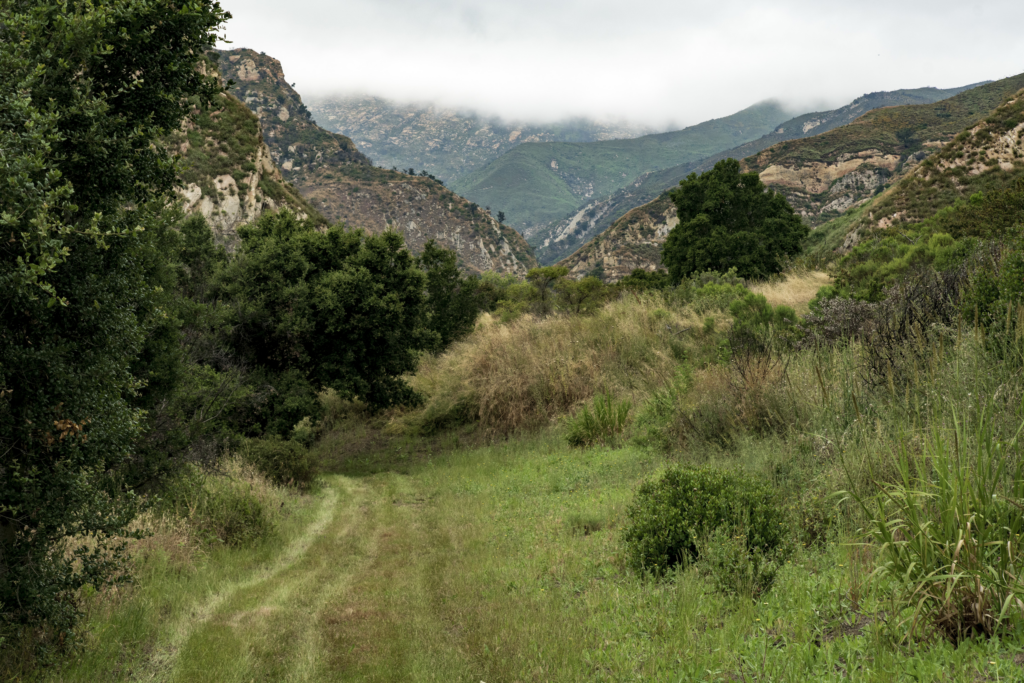
What would the property be like if the Land Trust had not bought it from the Hollister and Chamberlain families in 2001 and then worked for years to restore it?
“Well, it would be somebody’s private property,” says John, “and the public wouldn’t be able to hike here and the school kids wouldn’t be able to learn about nature. There might be a big house, too.”
Andrew’s answer: “Houses up and down the canyon.”
They both agree that the work of the Land Trust is vital to keeping the Gaviota Coast from being developed. The local nonprofit reaches out to landowners to see if they’re interested in voluntarily giving up development rights for an economic benefit. Over the last thirty years, they have saved around 32,000 acres, not only with the support of the landowners, but the generosity of the community. Bluffs, mesas, woodlands, salt marshes, coastal dunes, butterfly habitat, farms, and ranches are forever preserved and open to the public.
Thanks to recent donations, they were able to purchase the Gaviota Overlook, forty-eight acres of rolling grassland adjacent to Arroyo Hondo, and they are putting in more trails and places to picnic.
Arroyo Hondo is open on the first and third full weekends of the month, weather permitting. Reservations are free and required. Docent-led nature hikes are offered on Saturdays mornings when open.

